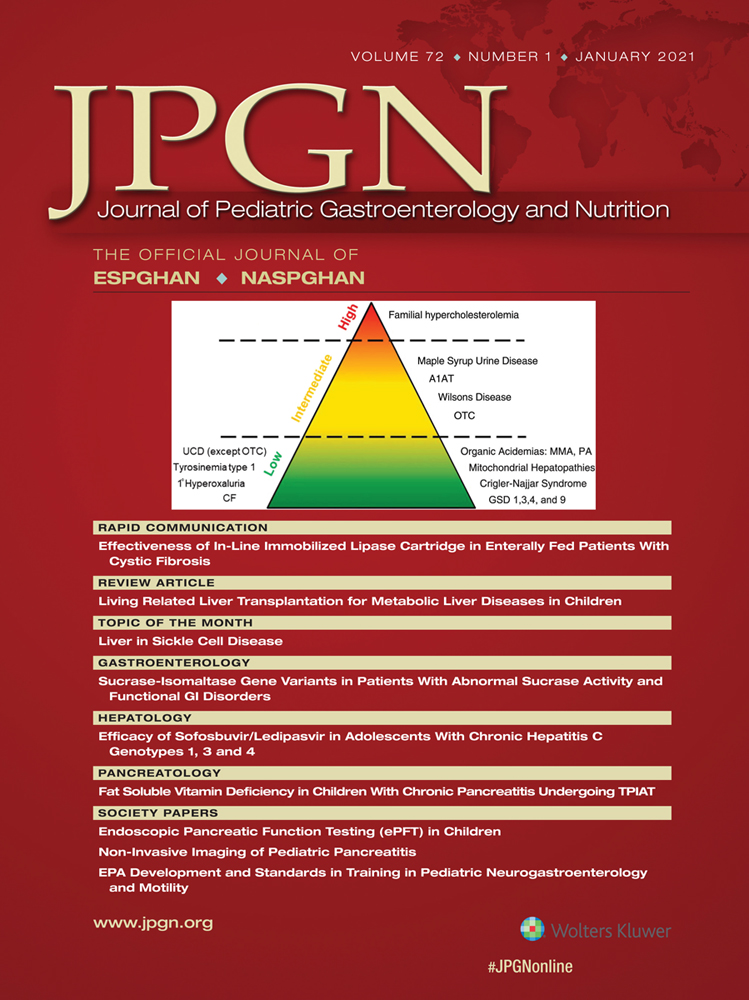Optimized Trientine-dihydrochloride Therapy in Pediatric Patients With Wilson Disease
Is Weight-based Dosing Justified?
Supplemental digital content is available for this article. Direct URL citations appear in the printed text, and links to the digital files are provided in the HTML text of this article on the journal's Web site (www.jpgn.org).
T.M., M.W., A.F., A.M., I.M., J.P., G.F.H. report no conflicts of interest. U.T. reports lecture fee from AbbVie, outside the submitted work. P.F., Adboard: Univar, Alexion and Vivet Therapeutics, Gliead, Abbvie, MSD, NovoNordisk. K.H.W. advises for Univar BV, GMP-orphan, Vivet Therapeutics, Ultragenyx, Alexion. K.H.W. received grant support (to the institution) from Alexion, Bayer, Bristol-Myers Squibb, Eisai, GMP-Orphan SAS, Novartis, Univar and Wilson Therapeutics.
ABSTRACT
Objectives:
The aim of the study was to investigate the efficacy and safety of trientine-dihydrochloride (TD) in pediatric patients with Wilson disease (WD) and the effect of different weight-based dosages on their clinical and biochemical outcome.
Methods:
We retrospectively reviewed the clinical data of 31 children with WD receiving TD therapy ages under 18 years at the time of diagnosis. Outcome measures included parameters of copper metabolism and liver function tests. To examine the impact of different weight-based dosages, 2 dosage subgroups were analyzed. Group 1 received less than 20 mg/kg TD per day, group 2 more than 20 mg · kg−1 · day−1.
Results:
Median follow-up was 60 (5–60) months in the total study group. During TD therapy, nonceruloplasmin-bound copper was reduced from mean 1.53 (0.01–6.95) at baseline to 0.62 (0.01–4.57) μmol/l. 24h-urinary copper excretion diminished to 1.85 (0.8–9.6) μmol/day approximating the therapeutic goal of 1.6 μmol/day. Seven of 31 patients (22.6%) required discontinuation of TD treatment, in 4 cases it was because of adverse events (ulcerative colitis, gingival and breast hypertrophy, hirsutism, elevation of transaminases).
Investigations about weight-based dosage showed no significant difference of any laboratory parameter between the 2 cohorts. But in terms of clinical safety, adverse effects because of TD were only found in 6.7% of children in group 1 (<20 mg · kg−1 · day−1, median follow-up 60 [9–60] months), whereas in group 2 (>20 mg · kg−1 · day−1, median follow-up 60 [14–60] months), it was 63.6%.
Conclusions:
TD proves to be an efficacious alternative chelating agent for children with WD. Weight-based dosages above the recommended 20 mg · kg−1 · day−1 may increase the rate of adverse effects in pediatric patients.




